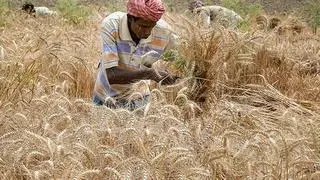Mainstreaming millet consumption as an healthy alternative to the daily diet and value additions in the form of ready-to-eat (RTE) or ready-to-cook (RTC) foods are some of the ways to brand millets for the mass market, said speakers at a panel discussion on ‘Value Addition & Branding Millets’ at the millets monclave, organised by Nabard and businessline, on Friday.
“Adoption of millets is rooted mainly on three factors: health, convenience, and sustainability,” Rishika Reddy, Executive Director, Millets Marvels said, adding that it is critical to focus on three factors to make millets more appealing to the consumers.
Available on the go
Reddy said Millets Marvels’ quick-service restaurants (QSR) are located at airports to make millets more mainstream. “If you are on a flight, you have only options like RTE upma or cup noodles. Why can’t the base of all these be millets?” she asked, adding that Millets Marvels is working on developing healthy meals that are available on the go.
S Kiran, Executive Director, VIKASA, Andhra, said promoting millets under RTE category alone won’t help mainstreaming millets. “Millets should become part of our regular food system like a replacement to rice or wheat.” Kiran also said there is a yawning gap in quality between farm gate and industry standards.
“As per estimates, nearly 20 percent of millets have inner materials like stones, pebbles or dry moisture content, which leads to deterioration of quality of millets,” said Kiran. He added that Farmers Producers Organisations can play a major role in addressing the quality mismatch.
Raju Bhupati, Founder & CEO, TrooGood, said three Q factors such as quest, quality and quantity are three key factors needed to scale up growth in millets business. “Quantity is an important factor. Unless there is a demand (for millets), it won’t go anywhere how much you promote.”
TrooGood is India’s largest millet processing company, which so far processed 4 million kilograms of millets. The company produces 2.5 million millet-based chikkis (a jaggery based confectionery) per day across five factories. He said the real challenge is how to offer a whole lot of nutrition at ₹5, a snack segment that is dominated by big FMCG players.
Natural adapters
Ashutosh Deshpande, Head of Value Chain, Reliance Foundation said the not-for-profit organisation has been working with farmers in Mandla district in Madhya Pradesh in partnership with Nabard and GIC to help farmers with climate adoptive farming practices. “We promoted millets because they are natural climate adapters.”
Deshpande noted that minor millet cultivation in Mandla shrank from 40,000 hectares in 2008-09 to 13,000 hectares in 2018-19 as farmers were moving towards paddy and maize. “So, we devised an integrated model working from the seed up to plate and make interventions across the chain to improve the income at the hands of the farmers,” he added.
He also said animal nutrition can potentially be a huge market for millets, which is today dominated by maize and soyabeans. Vinay Kamath, Senior Associate Editor , businessline, moderated the session.








Comments
Comments have to be in English, and in full sentences. They cannot be abusive or personal. Please abide by our community guidelines for posting your comments.
We have migrated to a new commenting platform. If you are already a registered user of TheHindu Businessline and logged in, you may continue to engage with our articles. If you do not have an account please register and login to post comments. Users can access their older comments by logging into their accounts on Vuukle.